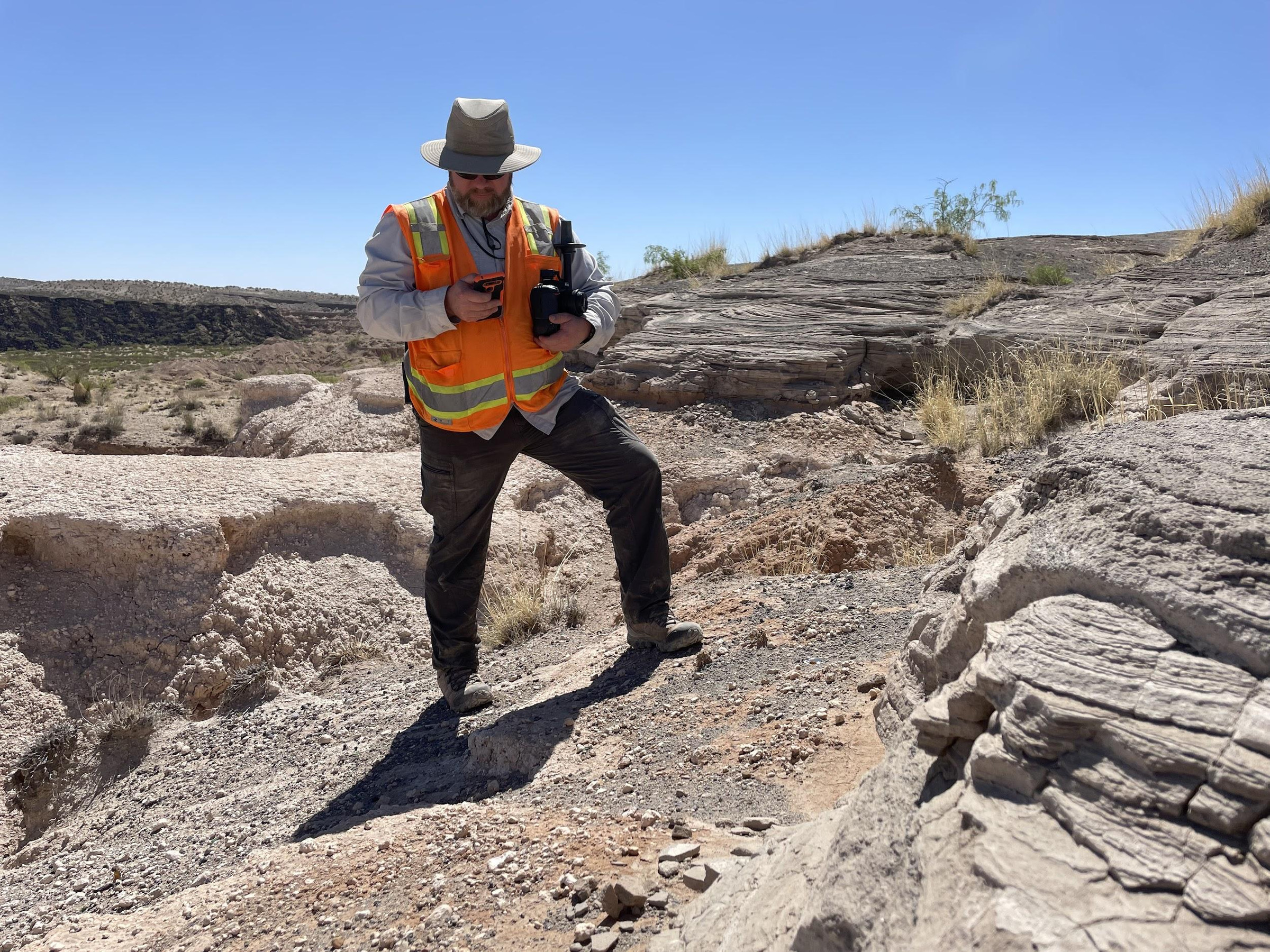For the love of simplicity and helping everyone
Despite now being on a mission with NASA level funding, and with colleagues sporting equipment the cost of a college fund, Stephen Scheidt likes to keep his equipment simple, cost-effective and personal.
“It was mostly born out of a lack of funding,” Scheidt says driving his beat-up rental Toyota across the sandy tracks of the New Mexican desert. “I was always asking myself ‘What hardware is available to me right now and what solutions can I come up with based on what it is capable of doing?’”
It is a call back to the way he used to work on his equipment when he was not backed by the largest scientific organization in America. He would rather spend the time and effort than spend the money if he can, mostly because it is a rewarding feeling to come up with something new that can help discover something new about the world we live in.
“I mean it is great to find rocks, but what about understanding the layer deposits that tell a much greater story about our planet?”
Dr. Scheidt is a man of many backgrounds and talents. He received his Bachelor’s of Science from the University of Toledo in 1999 in Environmental Science before he received two post-graduate degrees in Geology (a Master’s from South Carolina in 2002 and a PhD from Pittsburgh in 2009) and has studied in various coinciding fields from thermal spectroscopy to topography to photogrammetry and much more. This wide variety of experiences and knowledge makes him a valued member of the Howard University Department of Physics, and an integral part of the RISE2 mission where he is always looking to put himself to good use whenever and however he can.
‘I try to help people on these missions however I can. Whether that’s working on a drone or getting a van unstuck from the sand, I just want to help.”
One of Scheidt’s key objectives on the RISE2 mission was providing UAV data with drone technology. Simulating a satellite image taken of a planetary surface, his images provide the other scientists with the necessary information to help traverse the desert terrain in a manner similar to that of astronauts on another planet.
True to form, Scheidt does not have some fancy high-tech multi-million dollar drone you would expect from a NASA scientist. Instead, like he always does, he keeps it much simpler and cheaper.
“As far as drone tech, I’ve been using commercial off-the-shelf drones,” Dr Scheidt said. “I’ve used the Trimble UX5-HP for much of my work in the past, DJI Phantom, DJI Mavic 2 Pro, and the Blackswift Technologies E2. They’re very good, and they do a good job if you know what you’re doing, which I do.”
In addition to his passion projects of working on new innovative technologies that can be made under $500 with enough time and elbow grease, Dr. Scheidt is looking to continue to further his knowledge in spectral imaging and geospatial camera systems. Each would help NASA, and more importantly everyone else, understand the natural world around them just a little better. These are just par for the course: simple goals for the man who loves to find simplicity and accessibility in science and technology.
© 2025 ReportingRISE. All rights reserved.

